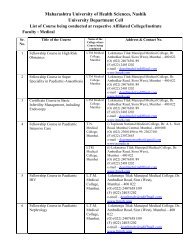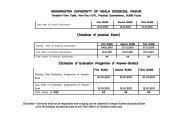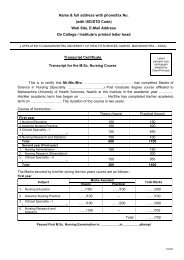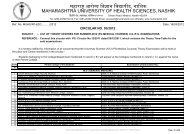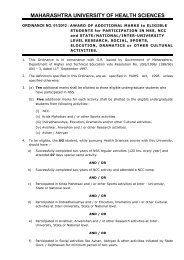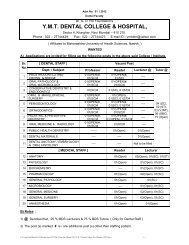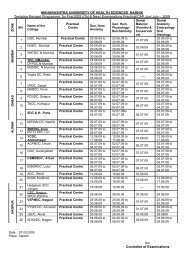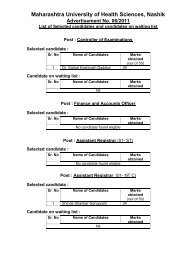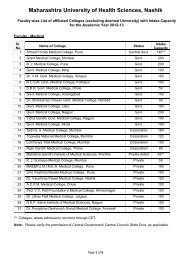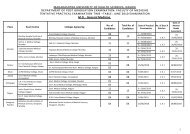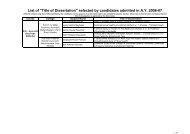Unit I
Unit I
Unit I
You also want an ePaper? Increase the reach of your titles
YUMPU automatically turns print PDFs into web optimized ePapers that Google loves.
Tooth: The tooth shows a projected part called the crown and the part within the gum and socket calledas the root. Enamel which covers the crown is the hardest substance in the human body. This slide isunstained like ground bone as the tooth matrix is calcified.Ground section of tooth (L.P): The central part of the slide shows a large cavity towards crown called pulpcavity and a narrow cavity towards the root called root canal. Both the cavities are continuous with eachother and it opens by a root pore through which vessels, nerves and connective tissue enter the canal. Thecavity is surrounded from all sides by dentine. The dentine is covered from outside by enamel in the regionof the crown and by cementum in the region of root. Dentine is made up of wavy parallel dentinal tubules.The enamel is composed of rods or prisms held together by a small amount of interprismatic cementingsubstance. Incremental growth lines or dark striae of Retzius represent variations in the rate of enameldeposition. Between the dark striae there are light striae or band of Schreger seen due to refraction of lightfrom enamel rods.Developing tooth (L.P): A stained slide of decalcified developing tooth shows various types of cells.Ameloblasts are the enamel producing cells columnar in nature with apical surface towards the dentine andthe basement membrane to the opposite side. Odontoblasts are simple columnar cells lining the pulp orpulp cavity. Their apical surface is towards the enamel and basement membrane is towards the pulp. In theroot part, the dentine is covered by cementoblasts, which secrete cementum. Cementum is firmly adherentwith the periosteum of the alveolar socket by strong periodontal ligament.Enamel-dentine junction (H.P): Dried tooth under microscope shows the enamel in the form of elongatedrods while at the enamel-dentine junction many enamel spindles are seen. These are extensions of dentinalmatrix penetrating for a short distance into the enamel. There are groups of poorly calcified twisted enamelrods called enamel tufts. They extend from the dentine-enamel junction into the enamel. Interglobularspaces are seen in the dentine appearing as black spaces.Dentinal canals are also seen in the dentine.Interglobular spaces are filled with incompletely calcified dentine and are called as interglobular dentine.Dentine-cementum junction (H.P): At the dentine-cementum junction the granular layer of Tomes is seen.Dentine shows large irregular interglobular air filled black spaces. Cementum shows lacunae and canaliculi,which were occupied by cementoblasts in living. The granular layer of Tomes is same as interglobularspaces but are smaller and closer together.Notes:69



